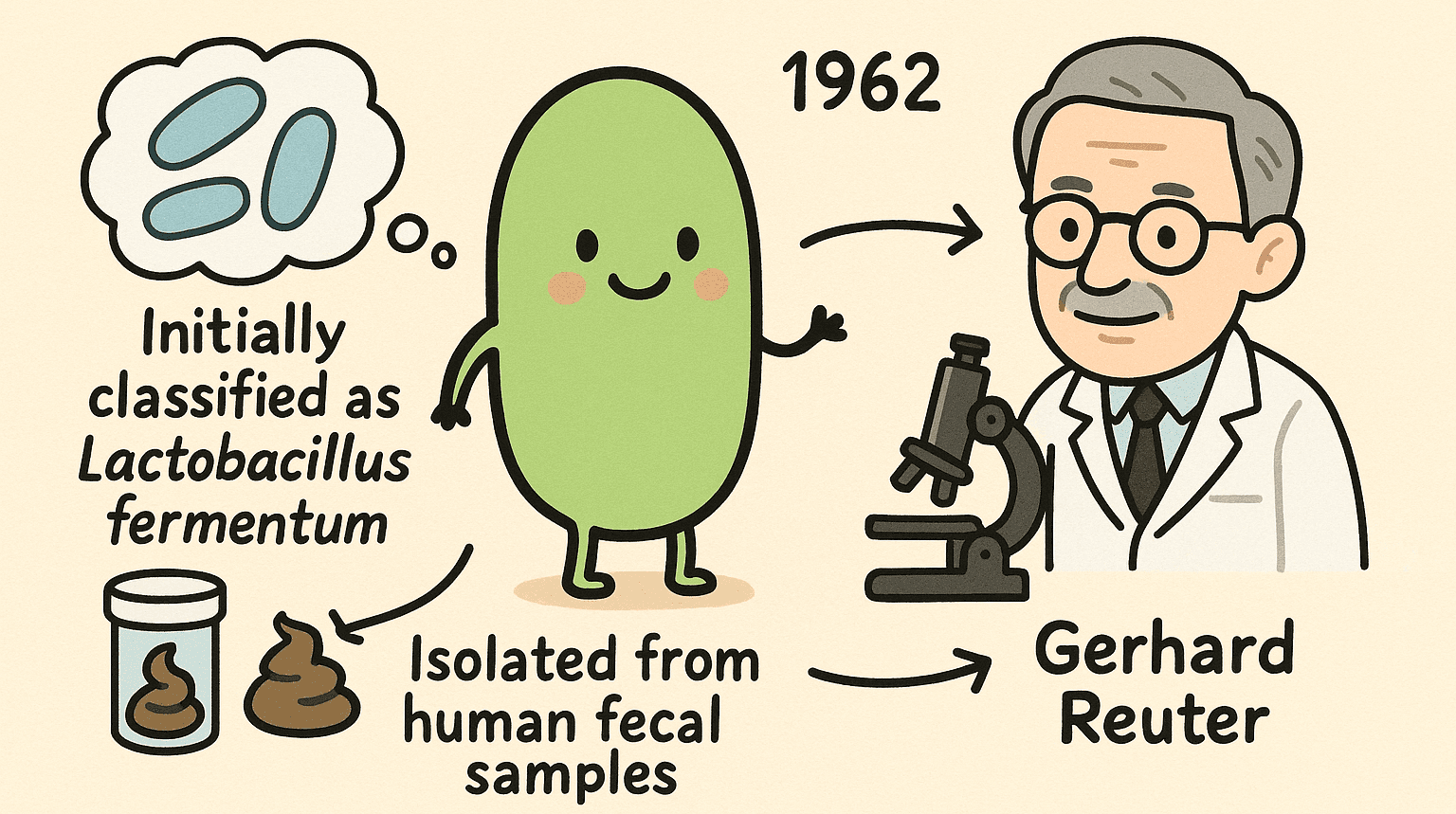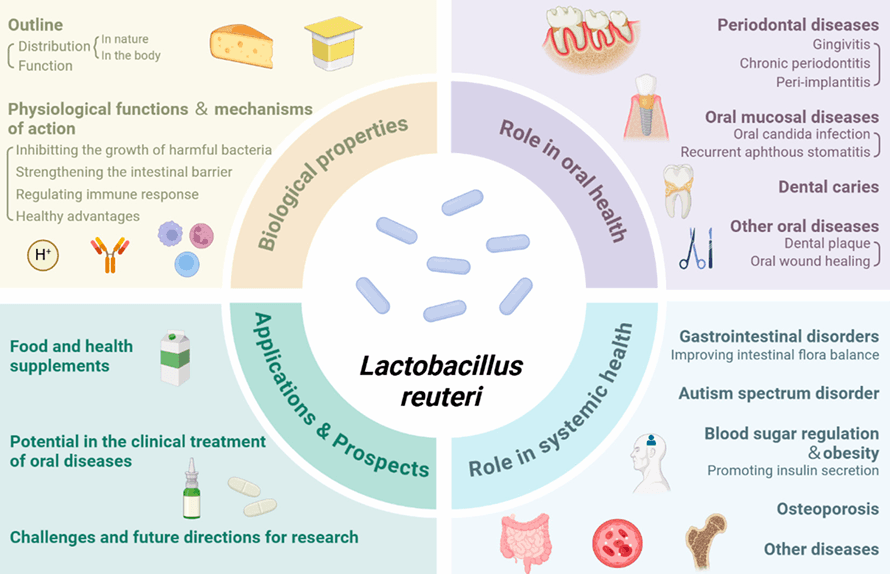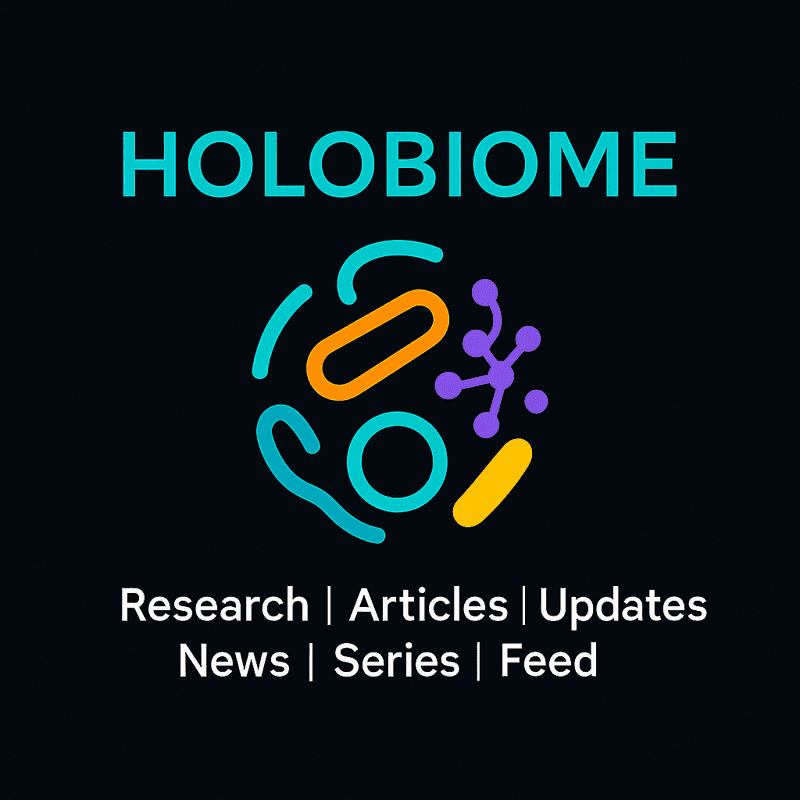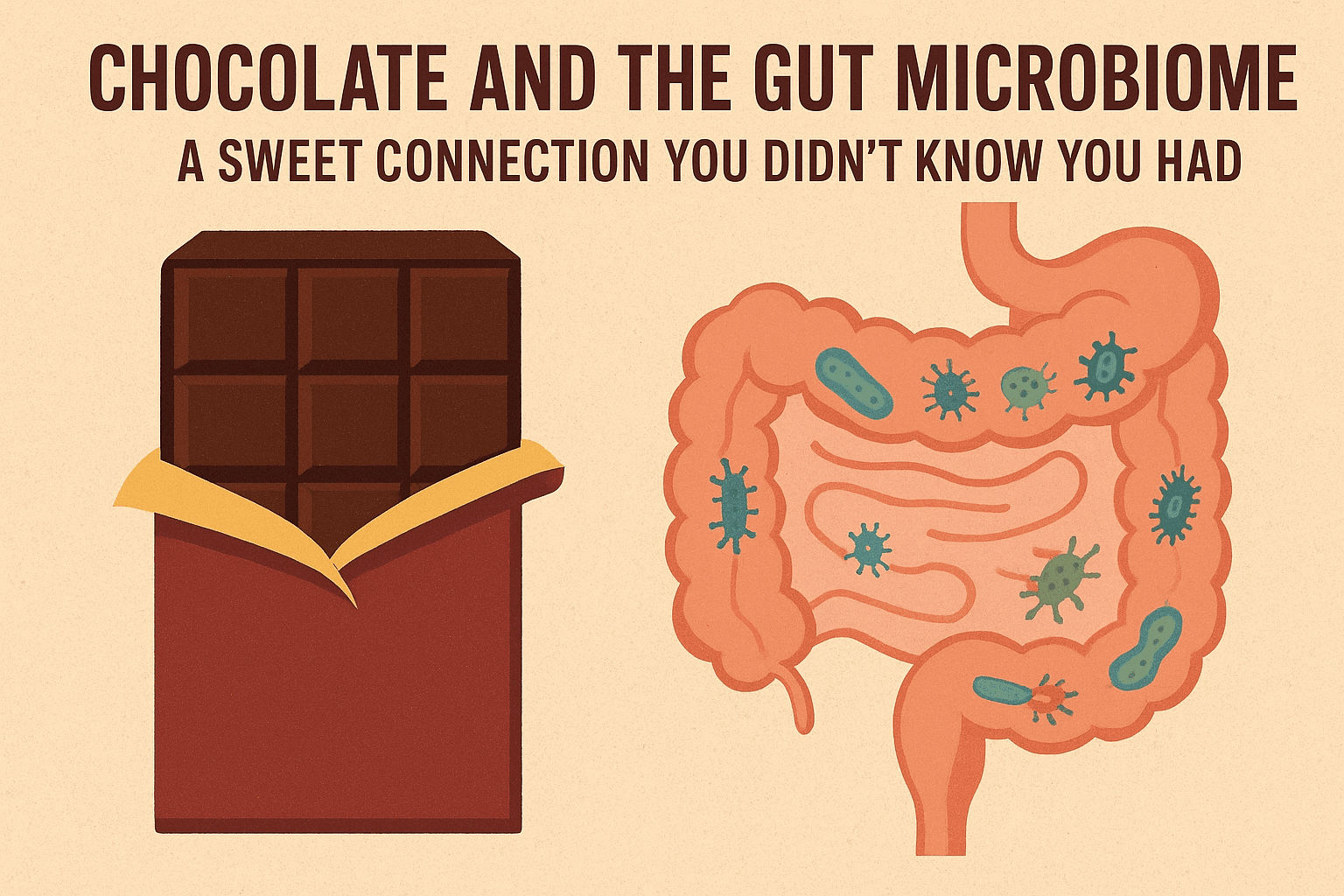History

Lactobacillus reuteri has a fascinating history that dates back to the early 20th century. Initially, it was classified as part of the lactic acid bacteria group but was mistakenly identified as a type of Lactobacillus fermentum due to their genetic similarities. In 1962, German microbiologist Gerhard Reuter successfully isolated Lactobacillus reuteri from human faecal samples, leading to the discovery of the probiotic -Lactobacillus reuteri , named in his honour. Recently, this bacterium was reclassified as Limosilactobacillus reuteri.
Habitat
Lactobacillus reuteri primarily resides in the gastrointestinal tract of various vertebrates, including humans, mice, pigs, and chickens. It has also been isolated from diverse sources such as meat, dairy products, and sourdough.
Health Benefits
Lactobacillus reuteri is present in breast milk since it has the ability to colonise the mammary duct. It is the one of the early colonisers in the infant's gut, thus playing an important role in establishing a healthy gut microbiome and conferring numerous health benefits. It is capable of colonizing various body parts like gastrointestinal tract, urinary tract, and oral cavity because of the presence of adhesive structures called pilins.
As a probiotic, Lactobacillus reuteri has been widely studied for its potential in treating various health conditions, including: infantile colic, colorectal cancer, inflammatory bowel diseases and Helicobacter pylori infections. In addition, it decreases inflammation in the intestine by promoting the production of anti-inflammatory mediators.
Lactobacillus reuteri has also shown great potential in improving oral health by helping restore balance in the oral microbiome. Studies have found that it has the ability to reduce the harmful microbes and promotes the growth of beneficial microbes, making it beneficial in managing periodontal diseases and dental caries. It also helps in controlling the oral mucosal conditions like mouth ulcers and candidiasis. It has gained attention as a natural therapy for a wide variety of oral diseases and to reduce the usage of antibiotics.
The benefits of Lactobacillus reuteri are not limited to gut and oral health but it also controls various other metabolic parameters like cholesterol, blood sugar levels , obesity and blood pressure. Research has shown that Lactobacillus reuteri can be used to maintain the bone health of the elderly population and aids as a potential treatment for postmenopausal women with osteoporosis.
Different strains of Lactobacillus reuteri have been shown to synthesize essential vitamins such as Vitamin B9 (folate) and Vitamin B12. Studies suggest that Lactobacillus reuteri supplementation can help address Vitamin B12 deficiency which can be used as therapeutics.
Industrial Applications
A key feature of Lactobacillus reuteri is its ability to produce reuterin- a naturally produced antimicrobial compound with broad-spectrum activity against harmful bacteria, yeasts, and molds makes it an invaluable asset in the food industry. Its ability to inhibit the growth of spoilage-causing microbes is utilized in manufacturing and preserving dairy products such as milk, yogurt, and cheese. By acting as a natural preservative, Lactobacillus reuteri helps extend shelf life and enhances food safety. Apart from reuterin, it also produces compounds like reutericin 6 and rotenocycline that also have shown promising antimicrobial properties.
Risks
The advantages of Lactobacillus reuteri on human health are impeccable. However, during the manufacturing of Lactobacillus reuteri as probiotics ,it is necessary to check for the antibiotic resistant strains, since Lactobacillus reuteri has the ability to acquire antibiotic resistance genes.
Microbe Profile
Shape : Rod shape
Gram nature : Gram positive
Spore Formation : Yes
Biofilm formation : Yes
Oxygen requirement : Anaerobic -Grows in the absence of oxygen.
Optimal Temperature : 37°C
Optimal pH : 5.7
Food usage : Lactose, Sucrose and Maltose
Taxonomic Classification
Domain : Bacteria
Phylum : Bacillota
Class : Bacilli
Order : Lactobacillales
Family : Lactobacillaceae
Genus : Limosilactobacillus
Species : Limosilactobacillus reuteri
-Varsha. V
Reference
- Hou, C., Zeng, X., Yang, F., Liu, H., & Qiao, S. (2015). Study and use of the probiotic Lactobacillus reuteri in pigs: A review. In Journal of Animal Science and Biotechnology(Vol.6,Issue1).BioMedCentralLtd. https://doi.org/10.1186/s40104-015-0014-3
- Kandler, O., Stetter, K.-O., & Köhl, R. (1980). Lactobacillus reuteri sp. nov., A New Species of Heterofermentative Lactobacilli. Zentralblatt für Bakteriologie: I. Abt. Originale C: Allgemeine, Angewandte Und Ökologische Mikrobiologie, 1(3), 264–269. https://doi.org/10.1016/s0172-5564(80)80007-8
- Mu, Q., Tavella, V. J., & Luo, X. M. (2018). Role of Lactobacillus reuteri in human health and diseases. In Frontiers in Microbiology (Vol. 9, Issue APR). Frontiers Media S.A. https://doi.org/10.3389/fmicb.2018.00757
- Sinkiewicz, G., & Ljunggren, L. (2008). Occurrence of Lactobacillus reuteri in human breast milk. Microbial Ecology in Health and Disease, 20(3), 122–126. https://doi.org/10.1080/08910600802341007
- Liu, Z., Cao, Q., Wang, W., Wang, B., Yang, Y., Xian, C. J., Li, T., & Zhai, Y. (2025). The Impact of Lactobacillus reuteri on Oral and Systemic Health: A Comprehensive Review of Recent Research. Microorganisms, 13(1), 45. https://doi.org/10.3390/microorganisms13010045
- Mok, K., Honwichit, O., Funnuam, T., Charoensiddhi, S., Nitisinprasert, S., Nielsen, D. S., & Nakphaichit, M. (2024). Synergistic activity of Limosilactobacillus reuteri KUB-AC5 and water-based plants against Salmonella challenge in a human in vitro gut model. Scientific reports, 14(1), 4730. https://doi.org/10.1038/s41598-024-53912-5
- Lima, E. M. F., Soutelino, M. E. M., Silva, A. C. d. O., Pinto, U. M., Todorov, S. D., & Rocha, R. d. S. (2025). Current Updates on Limosilactobacillus reuteri: Brief History, Health Benefits, Antimicrobial Properties, and Challenging Applications in Dairy Products. Dairy, 6(2), 11. https://doi.org/10.3390/dairy6020011



